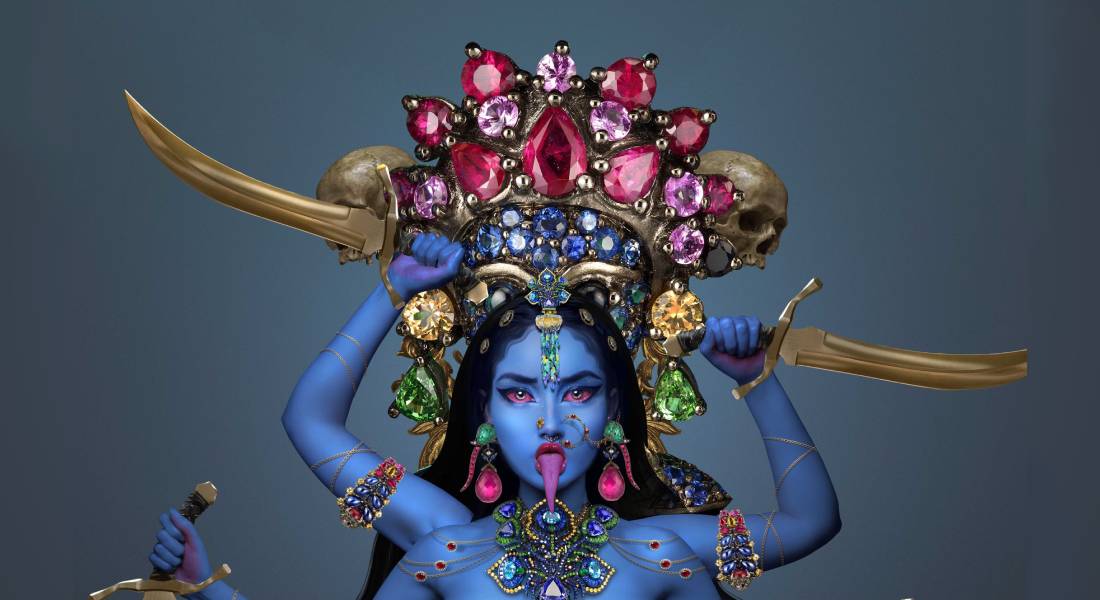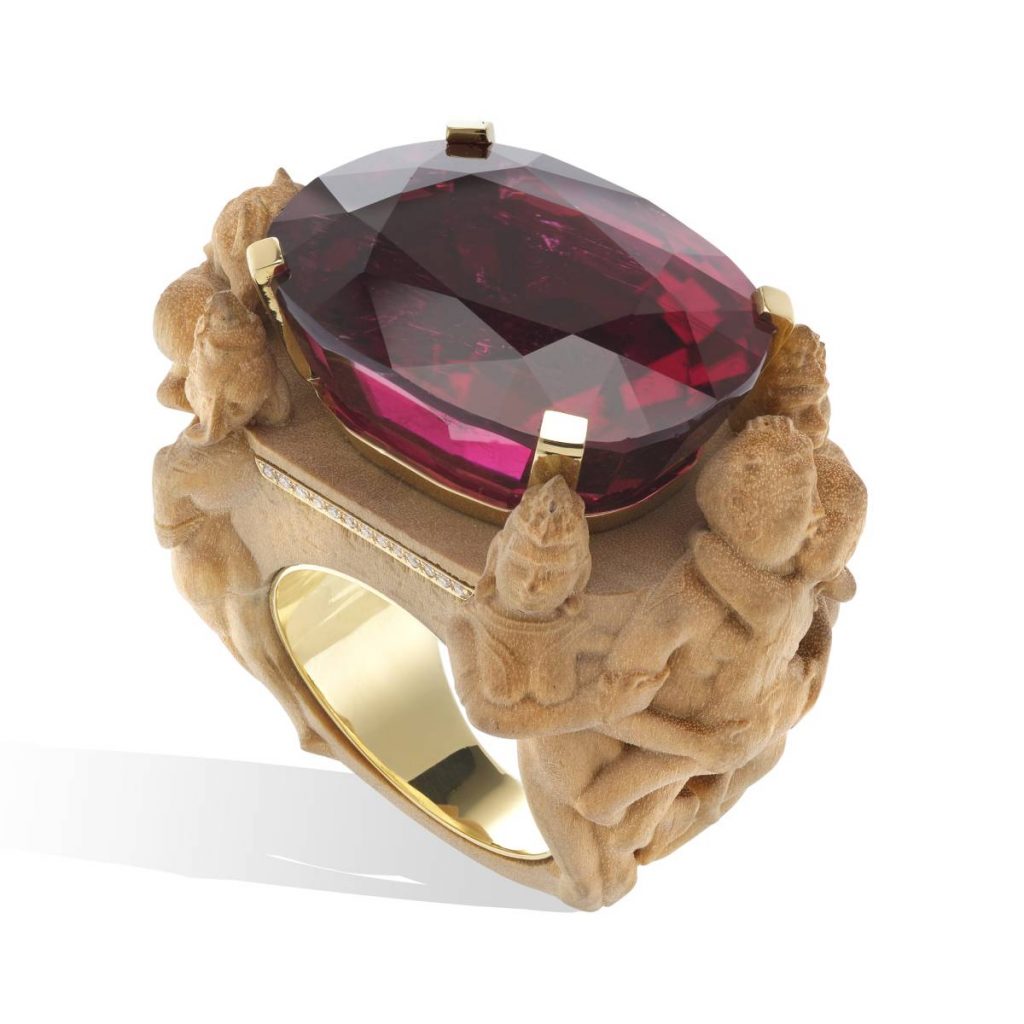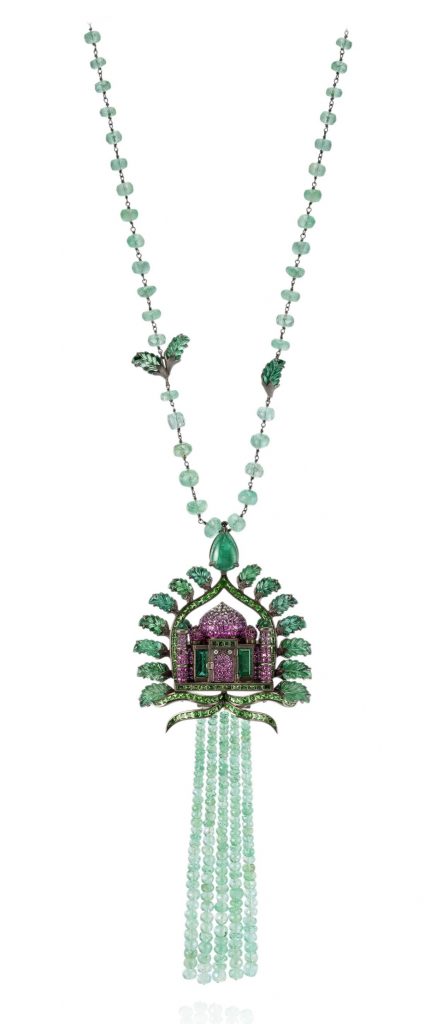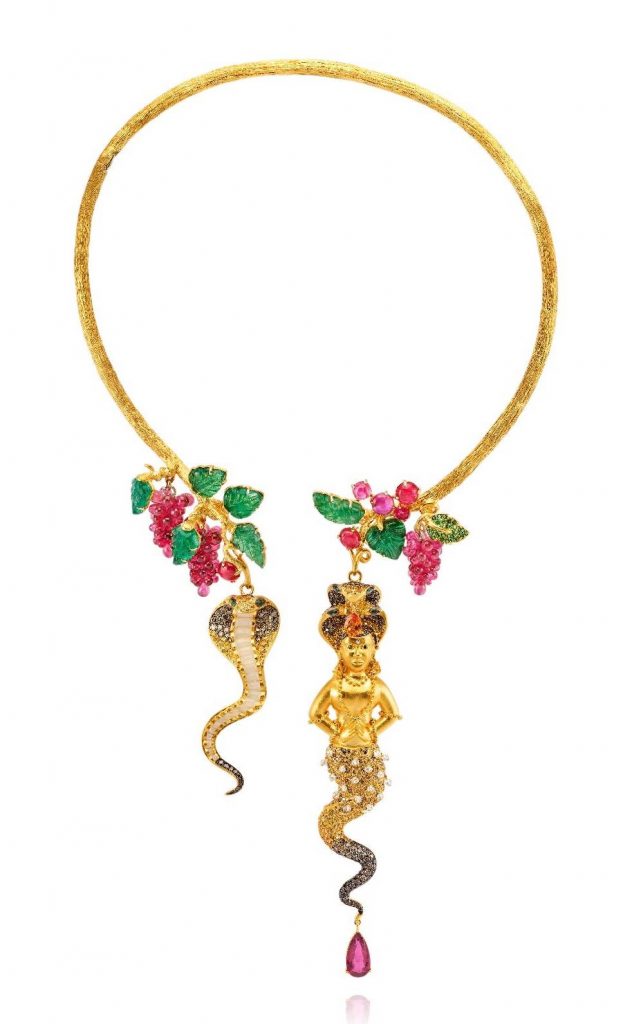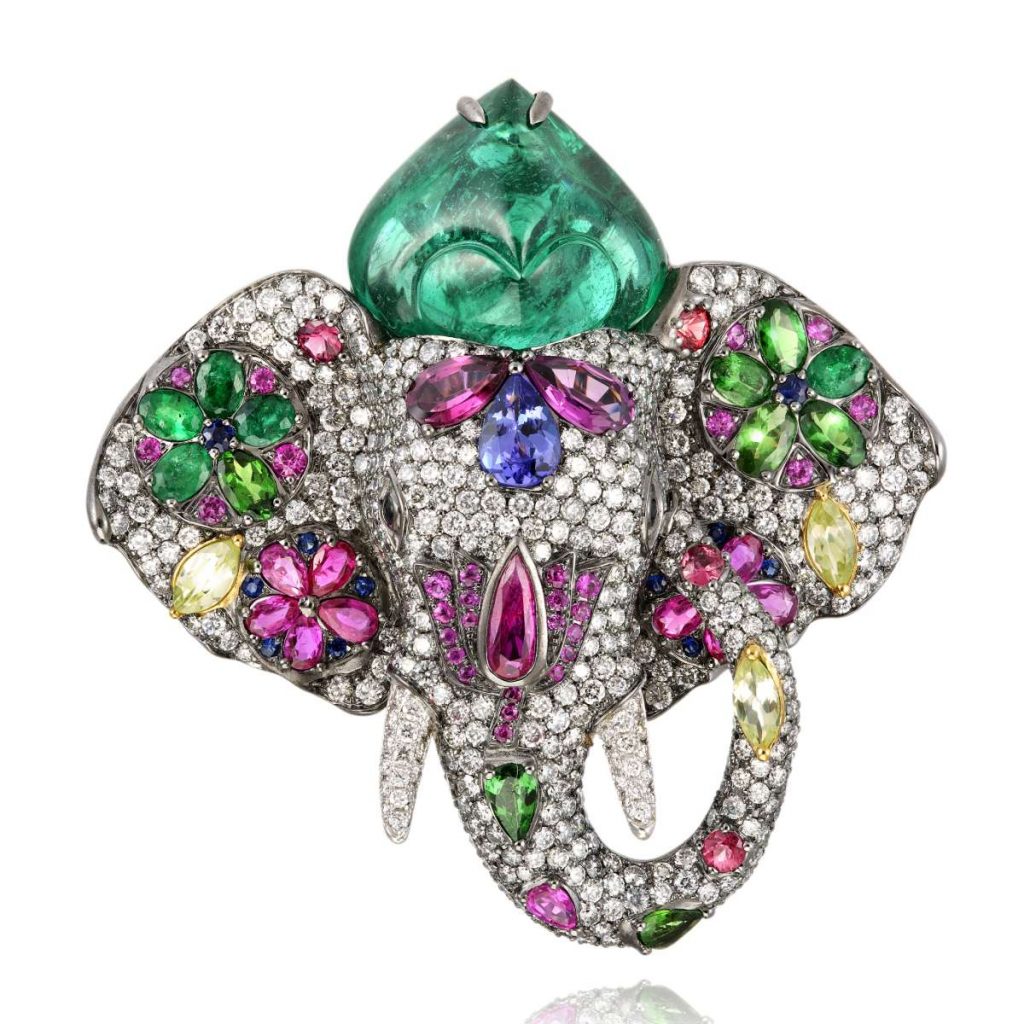The Indian Song collection by Paris-based avant-garde jewellery designer Lydia Courteille pays a reverential homage to the continent famous for its splendid temple architecture, rich mythology interwoven with religion, and colourful festivals. Lydia encapsulates the spirit of India in this atypical collection with her signature style.
Fascinated by the 17-century gem merchant and traveller Jean-Baptiste Tavernier who chronicled his visits to India, Paris-based jewellery designer Lydia Courteille decided to travel the length and breadth of the country to get ideas for her new collection, Indian Song, which was unveiled at the recently concluded The Couture Show 2022.
Her first stop was at the magnificent Khajuraho temple, built during the Chandela Dynasty between 950-1050 AD. The temple situated in Madhya Pradesh is famous for explicit erotic sculptures — suggesting that the pilgrim should leave all that is associated with worldly pleasures outside before entering the temple. Courteille made a statement ring inspired by its architecture that combines figures in beige sandalwood resembling the façade of the temple with red tourmaline in the centre, depicting the sacred sanctum sanctorum.
The next structure that captivated Courteille was the Madurai Meenakshi temple, Tamil Nadu, dating between the 12th and 18th centuries, dedicated to Lord Shiva and his consort Goddess Parvathi.
The Madurai Gopuram ring is recreated with colourful cabochon sapphires, rubies and spinel, which embody the stucco figures covering the temples facades. The carved emerald evokes the Mughal splendour and the pink sapphire Naga on the side represents the semi-divine figure who rules the underworld, and guards the Earth’s treasures including gemstones, gold, the rivers and lakes.
Not to miss one of the iconic monuments of India, the Taj Mahal, in Uttar Pradesh, Courteille took a closer look at the ivory-white marble mausoleum embellished with mosaics inlaid with gemstones, built by the Moghul emperor Shah Jehan between 1628 and 1658 in memory of his wife Mumtaz Mahal. The Taj Mahal combines Islamic, Ottoman, Indian and Iranian architectural influences, and so does Courteille’s splendid pendant necklace resembling The Taj.
Courteille’s open necklace in gold is inspired by Mahabalipuram, a UNESCO World Heritage Site situated in south of Chennai. Home to the famous Shore Temple dedicated to Lord Shiva, and the detailed rock relief ‘Descent of the Ganges’ depicting Bas relief consisting of a montage of mythical figures, including the Naga snake deities, which symbolise fertility and protect bodies of water.
Here’s an interpretation of Diwali, the festival of lights, symbolising spiritual victory of light over darkness, good over evil, and knowledge over ignorance. Diwali is celebrated in honour of Lakshmi, the goddess of wealth, and Ganesha, the god of good beginnings and the destroyer of all evil and obstacles. The gem-studded Ganesha ring is just as bright and colourful as the festival.
Typical motifs of flora and fauna found in India have been reinvented in Courteille’s style in these asymmetrical earrings that feature a parrot on a floral tree biting into a fruit. The earrings are patterned with rubellite, sapphires, diamonds, and carved emerald.

